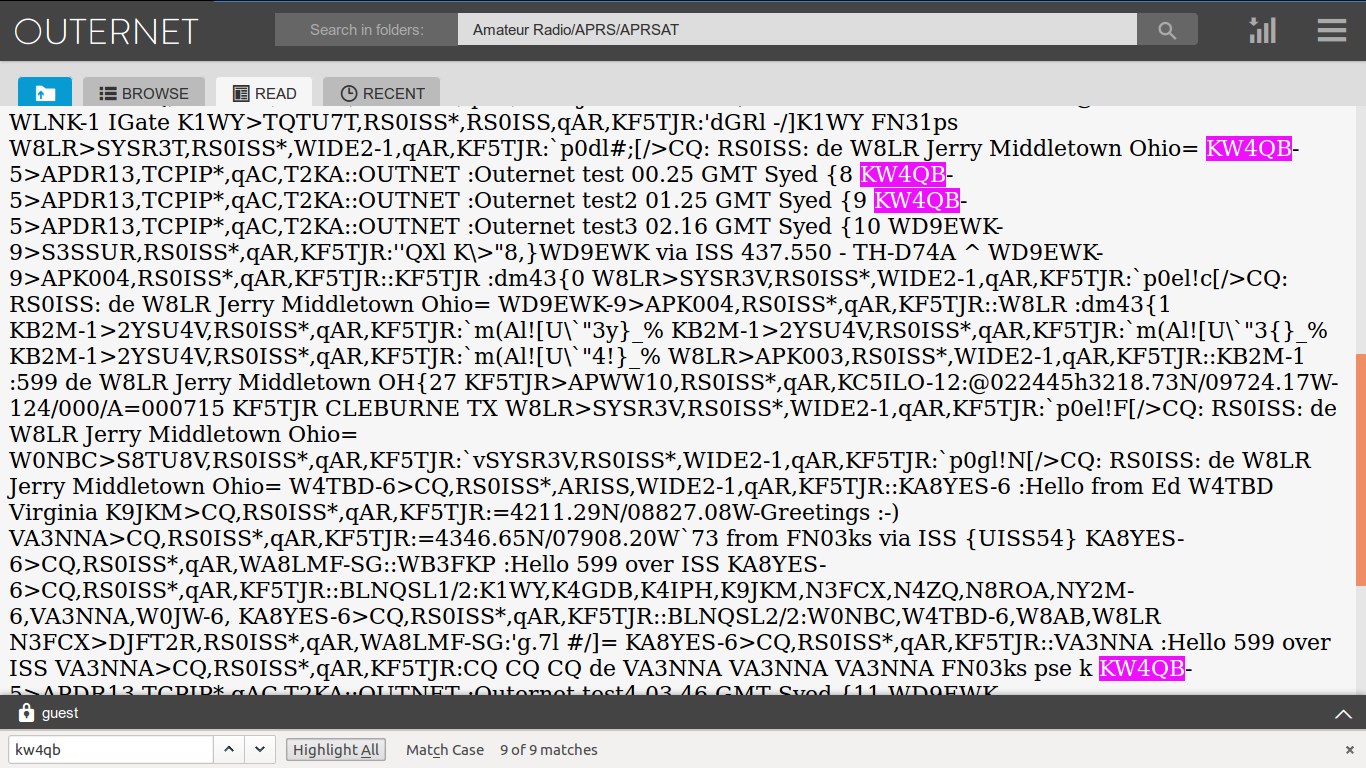I can’t see anything that would prohibit sending Wikipedia requests?
@Syed @Abhishek are you interested in trying this out?
If you wanted to keep bandwidth down you could investigate sending these as plain text from wped GitHub - mevdschee/wped: Wikipedia client for the command line
Have it in a separate bit of the interface to your full wikipedia articles?
Example output:
user@user-thinkpad-x201:~$ wped -f aprs
APRS Calling
APRS Calling is a manual procedure for calling stations on APRS to
initiate communications on another frequency, or possibly by other means.
It is inspired by Digital Selective Calling, a part of the Global Maritime
Distress Safety System. It also builds on existing digital
procedures inherited from morse code and radioteletype operation. ITU
Q codes are used in conjunction with APRS text messages to implement APRS
calling. APRS calling is intended to complement monitoring voice calling
frequencies.
Contents
* 1 Procedure
* 2 Example
* 3 See also
* 4 References
* 5 External links
Procedure[edit]
1. The calling station sends a QSX signal to the station or group they
wish to reach using an APRS text message. The QSX should include the
necessary information for contact, possibly including frequency and
mode.
2. Once the called station or stations are ready to communicate on the
specified channel, they answer using a QSX text message on APRS.
3. The stations shift communications to the arranged channel.
Example[edit]
All APRS transmissions include the call sign programmed into the APRS
unit. The text message doesn’t necessarily require the station
identification commonly seen in voice, CW or RTTY exchanges, so long as
the programmed call sign is valid.
This example shows N6BRK announcing a net on 147.480 MHz to the NALCO APRS
group. When ready to communicate on the coordinated frequency, KJ6VVJ
responds with an acknowledgment to the QSX. If the operating mode isn’t
obvious in context of the frequency, the initiating stations QSX should
specify what it is.
±-----------------------------------------------+
| Sender | Recipient | Message |
|--------±----------±--------------------------|
| N6BRK | NALCO | QSX NALCO Net 147.480 MHz |
|--------±----------±--------------------------|
| KJ6VVJ | N6BRK | QSX |
±-----------------------------------------------+
See also[edit]
* ACP-131 - Combined Communications-Electronics Board Communications
Instructions / Operating Signals
* Amateur radio
* Automatic Packet Reporting System
* Digital Selective Calling
* Global Maritime Distress Safety System
* Q code
References[edit]
1. ^ Brehaut, Denise. GMDSS A User's Handbook. Bloomsbury Publishing Plc,
2009, p. 35.
2. ^ Bass, Richard K. GMDSS A study guide for the Global Maritime
Distress Safety System. Tele-Technology, 2007, p. 9-1.
3. ^ Combined Communication Electronics Board (CCEB). Communications
Instructions ACP 131 (F) Operating Signals. Combined
Communications-Electronics Board, 2006, p. 2-25.
* American Radio Relay League. Field Service Form FSD-218. American
Radio Relay League, 2004.
* Bass, Richard K. GMDSS A study guide for the Global Maritime Distress
Safety System. Tele-Technology, 2007.
* Brehaut, Denise. GMDSS A User's Handbook. Bloomsbury Publishing Plc,
2009.
* Combined Communication Electronics Board (CCEB). Communications
Instructions ACP 131 (F) Operating Signals. Combined
Communications-Electronics Board, 2006.
External links[edit]
* Amateur Radio Universal Text Messaging/Contact Initiative
* Automatic Voice Relay System
* ARRL Field Service Form FSD-218 (1/04)
* v
* t
* e
Packet radio
* ALOHAnet
Traditional * AX.25
* Terminal node controller
* FBB (F6FBB)
APRS * APRS
* APRS Calling
* AMPRNet
TCP/IP packet radio * KISS (TNC)
* KA9Q
* Phil Karn
* Spartan
Specialized * FX.25 FEC
* Encoder receiver transmitter
source: https://en.wikipedia.org/wiki/APRS_Calling
